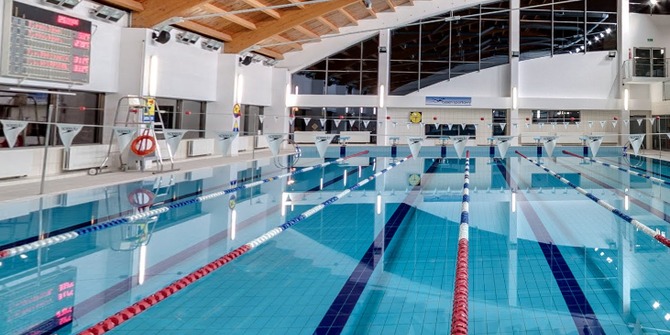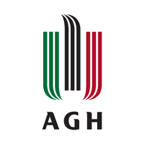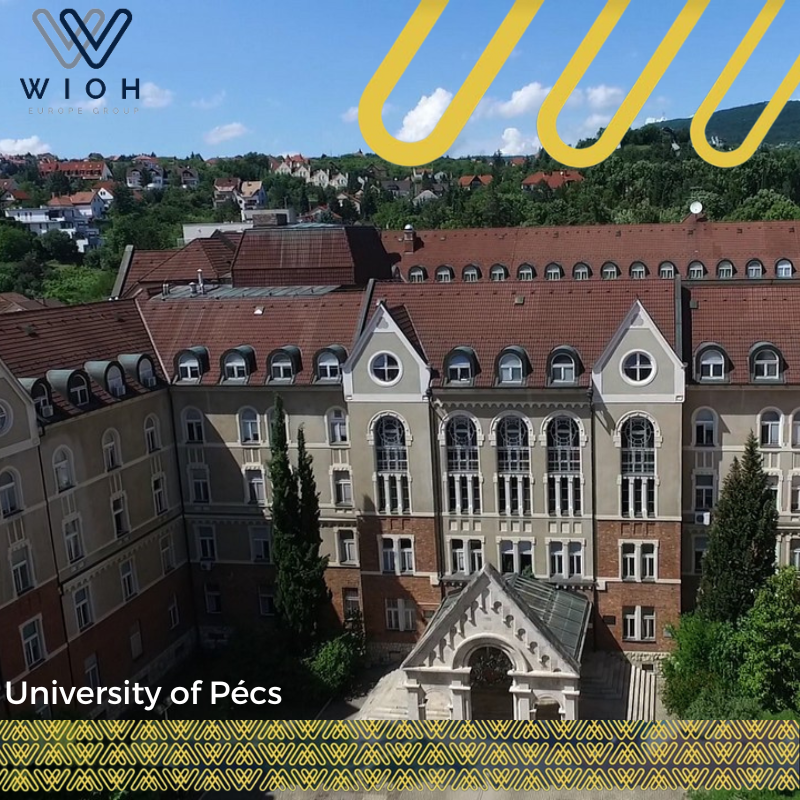AGH University of Science and Technology in Krakow, is developing cooperation with colleges and universities in Poland, Europe and all over the world, and the fulfillment of tasks and projects that are part of the knowledge triangle: education – scientific research – innovations, is at the forefront of its priorities.

- University Rankings:
According to QS ranked 801 for the year 2020.According to THE World ranked 1001 for the year 2020.According to SJR ranked 419 for the year 2021. - University history:In 1912, a group of prominent engineers and mining activists led by Jan Zaransky began the process of applying for approval to establish a school of higher education that would educate mining engineers in Krakow. The endeavors were successful, and in 1913 the Vienna Ministry of Public Works appointed the Organizing Committee of the Academy of Mining, headed by Professor Josef Morosevic. But the outbreak of World War I in 1914 made it impossible in October to start the newly opened university’s first academic year.
After Poland regained its independence, the organizing committee resumed its work, and in 1919, the Council of Ministers passed a resolution to establish and open the Mining Academy in Krakow. In 1923, the foundation stone of the future university building was laid, two years later, the academy logo project was created with the signature of BT – Bogdan Treter.
In 1923, the foundation stone of the future university building was laid, two years later, the academy logo project was created with the signature of BT – Bogdan Treter.
Soon the academy reached a very high educational level, became one of the best European mining schools, and in some disciplines its scientist achieved results of great importance for knowledge and science
Between 1939 and 1945, the main building of the Academy was occupied by the German General Government. The Academy’s property was completely destroyed and looted, and the statue of Saint Barbara was broken by the act of being thrown from the roof of the main building. Thanks to the dedication of the staff, part of the library has been preserved.
At the beginning of 1945, the Krakow Mining Academy was the only organized technical university in the country.
It became a support center for other technical universities. The Krakow University of Technology came into being within the walls of the Academy. It worked under the name of the Polytechnic Colleges of the Academy of Mining until 1954.
The Academy also played a major role in the creation of the Silesian University of Technology (23 graduates of the Mining Academy were professors there), the Czestochowa University of Technology, also contributed to the rebuilding of the Warsaw University of Technology, the organization of the Wroclaw University of Science and Technology and the Gdask University of Technology.
In 1947, an internal decision was made to rename the university to the Academy of Mining and Minerals. However, it was not officially approved until 1949.
In 1969, with already 10 faculties in place, the academy received – together with the name Stanisław Staszi and Standard (Science) – a structure based on a centrally advanced institute.
In 1999, the statue of Saint Barbara was returned to the roof of the main university building A-0.Teaching staff:Rector: Professor Jerzy LeesStudents: It studies over 57,000 students.Staff: It employs more than 4,000 employees, including 2,000 teachers and professors.Specializations: The branches of science include about 67 branches of study, with 200 specializations in 16 colleges.Campus :
The campus is located between Mickiewicza, Reymonta, Buszka, Tokarskiego, Armii Krajowej, Gramatyka, Nawojki and Czarnowiejska streets.-
The campus occupies an area of 38 hectares of land, and is characterized by its ideal location, as it is located within walking distance from the main market square, as well as easy access to a number of trams and buses.
The campus consists of the following buildings and facilities:
Teaching and lecture buildings, main library, student canteens, health center, student houses, gymnasiums, student clubs, shops and service provision facilities, services and auxiliary facilities
The university campus is distinguished by an exceptionally elegant green landscape design. There is car parking near the university’s lecture halls. Additionally, the campus features several bike stands and racks, as well as covered parking spaces for bikes.
The campus is unique compared to other Polish universities in that teaching and research facilities, university administrations, student organizations, sports and leisure facilities, as well as student housing, are all located in one area of the city, thus creating an integrated system.
Faculties:
The university campus includes sixteen colleges:
College of Mining and Geological Engineering College of Mineral Engineering and Industrial Computer Science College of Electrical Engineering, Machinery, Computer Science and Engineering in Biomedicine College of Mechanical Engineering and Robotics College of Geology, Geophysics and Environmental Protection College of Mining Survey and Environmental Engineering College of Materials Science and Ceramics College of Foundry Engineering College of Nonferrous Metals/ College of Drilling and Oil and Gas/ College of Management/ College of Fuel and Energy/ College of Physics and Applied Computer Science/ College of Applied Mathematics/ College of Humanities/ College of Computer Science, Electronics and Communications.
University’s library :
The main library of the AGH University of Science and Technology is the largest art library in Krakow and one of the largest in Poland. Its history is related to the history and stages of the university’s development.
The library was established in the academic year 1921/22 established by the Senate Library Committee. At first, it was located in a building at Loretańska 18, then ul. Smoleńsk 7. In 1929, the group was moved to a room in the newly built building of the Mining Academy in Al. Mikiwitza 30.

- In 1938, the library’s collection had more than 17,000 volumes, including 5,000 volumes of periodicals. During World War II, the collections were deposited in the Jagiellonian Library. After the war, the library’s book collection was returned to the university’s main building, and restored after the war.
In 1949, the university’s name was changed to AGH University of Science and Technology. In the same year, Władysław Piasecki became director and then director of the library, holding this position until 1972. Thanks to his efforts, a free-standing library building was built, which was officially opened in 1966. In 1987, the building was named Władysław Piasecki.
After moving to new rooms, the dynamic development of the library began. As a result of launching new fields of study at AGH UST, the book collection has grown and its subject matter has expanded.
The 1990s were associated with the development of computing. It has been applied to almost all library operations, from the registration of holdings, through cataloging, information about collections, the electronic recording of loans and returns, and ending with the regulation of access to global electronic resources.
In the years 1996-1999, the library’s interior was renovated, expanding the space for specialized reading rooms and changing the functional layout of the library’s core agendas. In 2010, the renovation of the main facade of the building began and a decision was made to add a 7 meter wide part on the north side of the building in the next stage. From February 2014, the library began to be fully operational, and in March the building was officially opened.
After the expansion, the area of the library became 6100 square meters, and as a result of the expansion, there were significant changes in the field of user service and the organization of access to collections with the disabled readers in mind, several solutions were used to facilitate the use of the library. This resulted in the library building being awarded the City Council Medal in the “Krakow Without Barriers 2013” competition in the “Public Utility Buildings” category.
A free entry area was created, where about 60,000 textbooks were collected with the possibility of self-borrowing using self-service machines.
The reading room for periodicals and the general reading room are combined into one main reading room of two levels (97 places, including 4 places for individual research work).
Apart from the main library at AGH University of Science and Technology, there are 14 departmental libraries, 7 departmental libraries and 3 non-departmental unit libraries.Sports and Recreational Facilities:
The university has a wide range of sports and leisure facilities, the sports center is located within the campus boundaries, which enables the university staff and students to fulfill their sporting desires.
The center includes a gymnasium, exercise rooms, a modern bowling alley, billiards, table football, air hockey, children’s play area, dining facilities and a store for sports equipment.
A new swimming pool and football field were built, in addition to basketball and volleyball courts.
Sports and recreational facilities are modified to suit the needs of persons with disabilities.
Swimming pool: It is a modern sports and leisure complex located close to the university campus. The complex includes a 25-meter competitive swimming pool, officially approved by the Polish Swimming Federation, a 25-meter training pool, a leisure pool with hydromassage, as well as a jacuzzi, water slide and sauna.
Football field: Located in the heart of the student residence, the modern football field measures 67 x 40 meters and can be divided into two smaller sports fields. The field has an artificial surface that makes it usable all year round; It is also well lit and fenced. In addition to basketball and volleyball courts.
Research and teaching facilities:
Constantly updated teaching and research facilities allow the university to educate students and conduct research at the highest international level. It also creates space for scientific research projects at a very high level.
Lecture and conference rooms are equipped with multimedia projectors, visual projectors, interactive whiteboards and projectors, screens, video conferencing systems, microphones, professional audio systems, as well as systems that allow simultaneous interpretation and interpretation. Educational activities take place in: more than 150 lecture halls, more than 200 rooms designed for practical classes and discussions, more than 680 laboratory-type rooms, more than 40 meeting rooms and theatres.
Titles awarded by AGH
The title of Distinguished Person is conferred once a year by the Senate of AGH UST during the June session. Badges related to the title are presented at the opening ceremony of the academic year, the number of neighborhoods honored with the title cannot exceed ten.
Doctor Honoris Causa: An honorary doctorate (Latin: “for honor”) is an honorary academic degree awarded to individuals who have rendered an immense service to culture and science. It is usually awarded to persons of high social and academic standing, during a senate ceremonial.
Honorary Consul: The title of Honorary Consul at AGH UST is awarded to persons affiliated with AGH University of Science and Technology, whose work has contributed to its development and promotion. The title of Honorary Consul is conferred during a ceremonial session of the Senate.
Professor Emeritus: The title of Professor Emeritus at AGH UST is conferred on distinguished scientists, technology innovators and other active or retired individuals of AGH UST staff. A doctoral degree is a prerequisite for applying for the title. The title of Professor Emeritus is awarded during a ceremonial session of the Senate.
International cooperation :
AGH is a member of the European University Association (EUA), as well as the OpenCourseWare (OCW) Consortium.
AGH University of Science and Technology has signed more than 400 direct cooperation agreements with foreign partners in Europe, North and South America and Asia. The University conducts nearly 200 research projects, including those covered by the EU Framework Programs, Interreg, COST, EUREKA, SAVE, ALTENER, CULTURE 2000, DESY, and CERN.
AGH UST also implements projects approved by the Ministry of Science and Higher Education within the framework of intergovernmental agreements.
AGH UST is also involved in several educational projects supported by programs such as Erasmus LLP, Leonardo da Vinci, CEEPUS, TEMPUS, Visegrad Fund, eTEN and the European Social Fund.
The university has nearly 200 agreements under the Erasmus LLP programme, which include exchange of students and lecturers.
AGH UST has always focused on cooperation with business and industry, and has signed partnership agreements with nearly 300 industrial facilities, including major international companies.
Jubilee: In 2019 the centenary of the opening of the AGH University of Science and Technology, in October the Jubilee was celebrated.
The AGH University of Science and Technology is a technical university where the exact sciences are strongly represented, forming the basis for the development of a wide range of applied sciences in a progressively increasing role for the social sciences and humanities.






